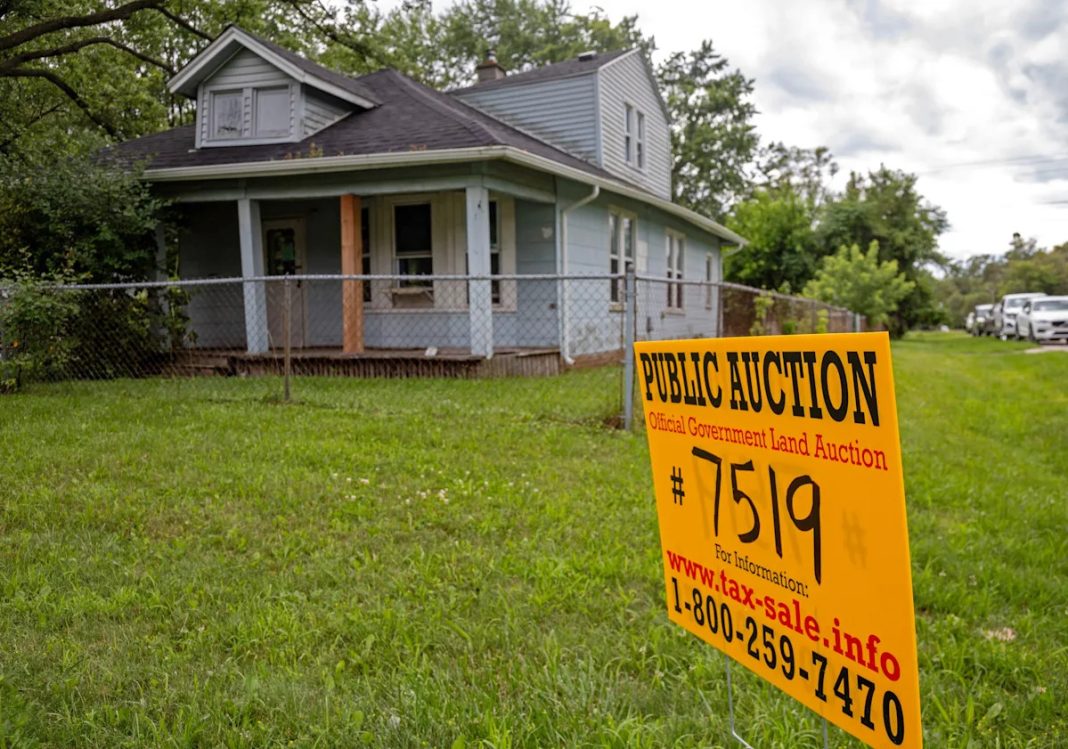Kimberly Draxler was in shock when she called her mortgage lender in April and was told her four-bedroom home in Hillview, Kentucky, would be sold out from under her in a matter of days.
Though she had been alerted that something might be wrong by a letter in the mail from an attorney offering assistance in warding off foreclosure, she said her lender never informed her that she was about to lose her home.
“They never called me and told me they were just going to rip my house right underneath me,” Draxler told CBS News.
Draxler’s lender said it notifies all borrowers of a possible foreclosure by mail and by phone throughout the process, in compliance with federal debt collection rules.
Before learning that her home was entering foreclosure, Draxler, who is 57 and on disability, said she stayed afloat financially by relying on her son, who contributed $600 a month to help take care of household expenses. But after he moved out in 2024, her bills began to pile up, she told CBS News. Draxler soon fell behind on her mortgage.
The financial pressures bearing down on Draxler highlight the struggles of homeowners still grappling with the rising cost of everything from housing and groceries to energy bills and insurance coverage. With many households stretched thin, unexpected events such as job loss, unplanned medical expense or even simple car problems can cause people to fall behind on their mortgages.
“I just couldn’t do it anymore”
Although foreclosures — which include default notices, scheduled auctions or bank repossessions — remain well below their pre-pandemic levels, they are on the rise.
As of August, foreclosure filings had risen six straights months and were up 18% from a year ago, according to property data firm ATTOM. Through June, roughly 188,000 properties had foreclosure filings, putting the U.S. on track to surpass the roughly 322,000 U.S. properties that went into foreclosure in 2024.
“Paying for the house, the car, the necessity bills — I just couldn’t do it anymore,” said Draxler, who had come close to losing her home in foreclosure on three previous occasions over the last decade.
Foreclosure filings in the U.S. (Line chart)
Roughly 94% of mortgage defaults occur after a homeowner loses income to extenuating circumstances, according to The Urban Institute, citing data from the National Bureau of Economic Research.
Rising homeownership costs
A key factor behind the rise in foreclosure rates is the growing cost home insurance, utilities, property taxes, repairs and other homeownership expenses. For example, single-family homeowners with a mortgage today pay an average of $2,370 a year for property coverage — up nearly 70% from five years ago, according to data from ICE Mortgage Technology.
In addition to rising homeowners insurance costs, many households are also contending with exorbitant property taxes as well as elevated interest rates.
“All of these rising costs associated with holding a home, you have increasing pressure on existing homeowners to continue to be able to afford and pay for their mortgages,” Geoff Smith, executive director of the Institute for Housing Studies at DePaul University, told CBS News.
Todd Teta, chief product and technology officer at ATTOM, also cited the recent slowdown in hiring as a factor behind rising mortgage delinquencies, noting that job loss often drives foreclosures.
A high interest rate environment can be particularly challenging for homeowners with variable-rate loans, which reset at certain intervals in part based on market conditions. That means a homeowner might see a major jump in their monthly mortgage payment if their reset occurs when interest rates are elevated.
A narrow escape
More such loans are now hitting their reset periods, Teta noted, a trend he expects to continue. “While there has been a small dip in interest rates, they remain significantly higher than just a few years ago, so borrowers with upcoming resets are still likely to see sizable payment increases.”
As for Draxler, she managed to keep her home by filing for Chapter 13 bankruptcy, which allows debtors to hold onto their property and pay off debt over time, usually within three to five years. But coming so close to losing her home of more than 30 years continues to weigh on her.
“I did not want to lose my house,” Draxler said. “I wouldn’t have no place to go.”
Kilmar Abrego Garcia back in court as Trump administration pushes for deportation
Mark Sanchez charged with felony, could face up to 6 years in jail, prosecutor says
Democrats and Republicans still trading blame as government shutdown enters Day 6

